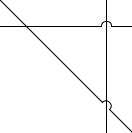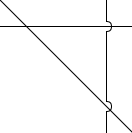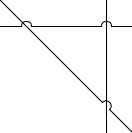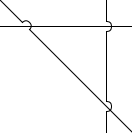Customizing Bridges
Crossing Styles
Different rendering styles can be set using BridgeManager’s property defaultBridgeCrossingStyle. The following table shows some of the styles defined by BridgeCrossingStyle:
| Name | Bridge Style | Scaled Variant |
|---|---|---|
GAP |
|
|
ARC |
|
|
RECTANGLE |
|
|
TWO_SIDES |
|
|
The scaled variants of these styles adjust their height proportionally to their width.
Crossing Determination
The BridgeManager class offers several policies for determining crossings between obstacles. For example, edge segments that have either a predominantly horizontal or vertical orientation can be configured to always appear on top of edge segments with the opposite orientation. You can use the bridgeCrossingPolicy property to specify a determination policy from the BridgeCrossingPolicy enumeration.
Custom Obstacle Provider
Note that obstacles are not limited to just edge segments. A custom IObstacleProvider implementation, for example, can define the border of group nodes as obstacles as well.
// Custom obstacle provider which provides a node's outline
class MyNodeObstacleProvider extends BaseClass(IObstacleProvider) {
private readonly node: INode
// Create a specific instance for a node
constructor(node: INode) {
super()
this.node = node
}
// IObstacleProvider implementation
getObstacles(context: IRenderContext): GeneralPath | null {
const style = this.node.style
if (
style.renderer
.getVisibilityTestable(this.node, style)
.isVisible(context, context.clip)
) {
// only for nodes which are currently visible:
// let the IShapeGeometry return the outline as GeneralPath
const geometry = style.renderer.getShapeGeometry(this.node, style)
const obstaclePath = geometry.getOutline()
return obstaclePath
}
// not visible: return null
return null
}
}Note that querying nodes for obstacle providers has to be enabled on
GraphObstacleProvider first,
by setting queryNodes
to true.
// enable querying nodes on the obstacle provider
const provider = new GraphObstacleProvider()
provider.queryNodes = true
bridgeManager.addObstacleProvider(provider)
// add the custom obstacle provider
graph.decorator.nodes.obstacleProvider.addFactory(
// if the current node is a group node ...
(n) => graph.isGroupNode(n),
// ... then return our custom obstacle provider
(n) => new MyNodeObstacleProvider(n)
)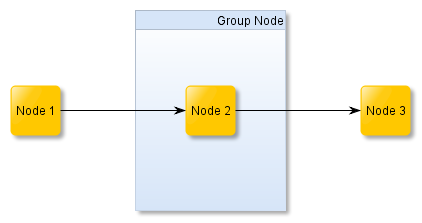
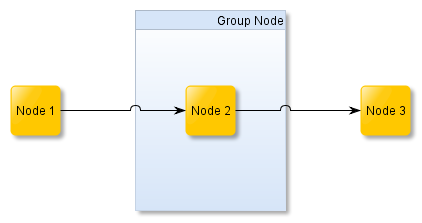
Bridges for Custom Edge Styles
The 10 Bridge Support sample of the Edge Style Implementation tutorial shows in detail what to do if your own edge style should support bridges.







